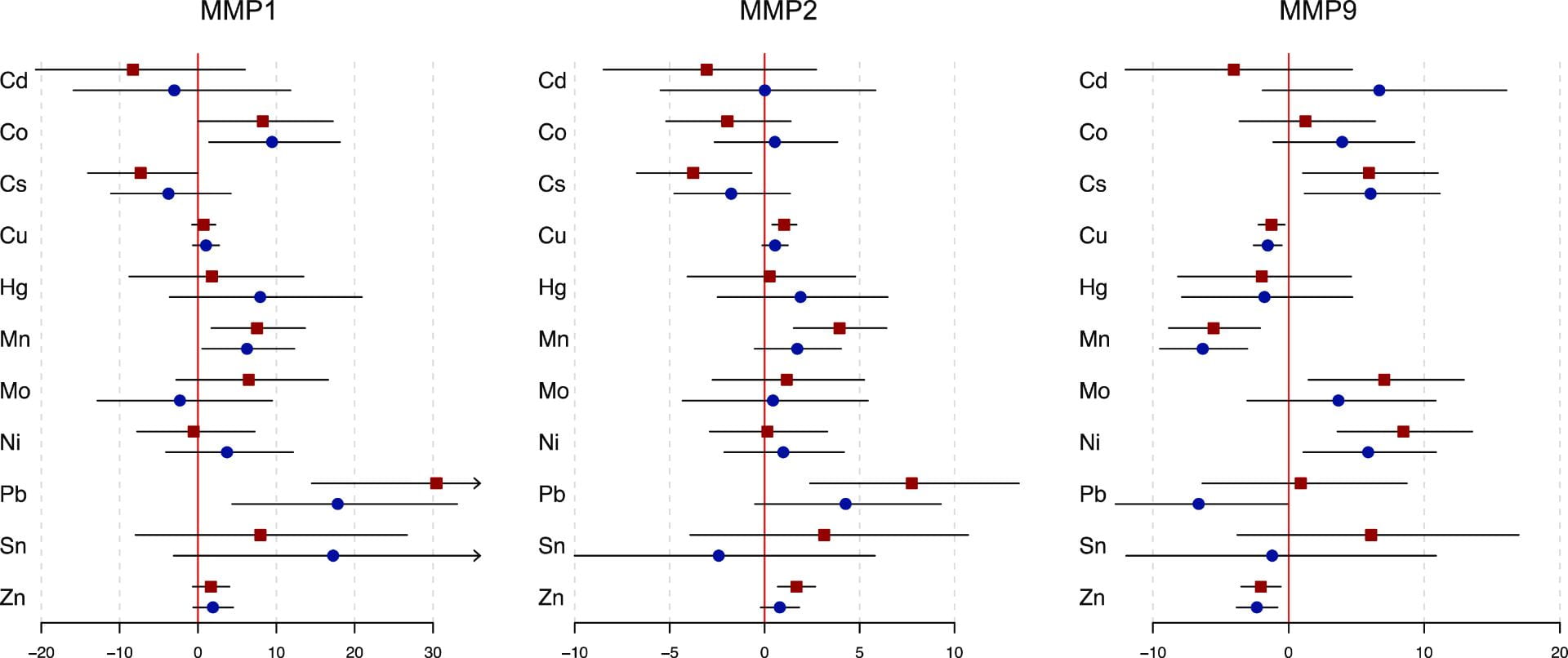PROTECT Reports Significant Associations between Heavy Metals and Matrix Metalloproteinases
New Project 1 findings suggest that there are significant associations between certain heavy metals and matrix metalloproteinases (MMPs), with several associations differing by fetal sex. This research was reported in a paper by lead author Christine Kim in Environmental Research.
MMPs are extracellular matrix (ECM) remodeling proteinases. ECM is an essential component that gives structure to body cells and tissues. MMP activity is normally low, but increases during ECM regulation and related remodeling processes. One of these processes is uterine tissue remodeling, which is necessary for structural and functional changes to arteries and veins to create the placenta, and is therefore critical for healthy pregnancies. The MMPs commonly observed in pregnancy include MMP1, MMP2, and MMP9.
Previous research shows that an unbalanced level of MMPs can lead to the premature rupture of membranes, which can result in preterm birth, demonstrating a link between an imbalance of MMPs and adverse birth outcomes. When it comes to what causes an unbalanced level of MMPs, past toxicological studies have hinted at a link between exposure to heavy metals, often found in Superfund sites, and altered MMP levels. An association between heavy metal exposure and adverse birth outcomes is established, but a clear association between heavy metal exposure and MMPs has yet to be explored in human populations.
In this study, Project 1 researchers set out to closely assess the relationship between maternal blood metal concentrations and MMPs. To do so, researchers measured blood concentration levels for eleven metals and the three MMPs commonly observed during pregnancy. Measurements were taken from 617 pregnant women in the PROTECT cohort during their first and/or second trimesters. Linear mixed effects models were used to observe and analyze associations.
Researchers found significant associations between blood concentrations for certain metals and aberrant levels of MMPs. Cesium, manganese, and zinc were significantly associated with all three MMPs. Lead overall had the greatest positive association with MMP1 and MMP2. Most of the significant associations between certain metals and MMPs observed were fetal sex specific. Among these associations, cobalt was positively associated with MMP1 in women with male fetuses. Cesium was negatively associated with MMP1 in women with female fetuses.

Figures showing the associations and 95% confidence intervals between maternal blood level concentrations and MMPs.
These findings contribute to the identification of biological pathways involved in heavy metal induced adverse birth outcomes. They also inform efforts to identify intermediate biomarkers that could serve as predictors of pregnancy outcomes in Puerto Rico. As for the sex-specific associations researchers observed, evidence of sex-specific toxicological effects in general is still mounting. Future studies on sex-specific outcomes can help further develop the early identification of pregnancy complications.
For all of the study’s findings and further discussion, you can read the full paper here.
